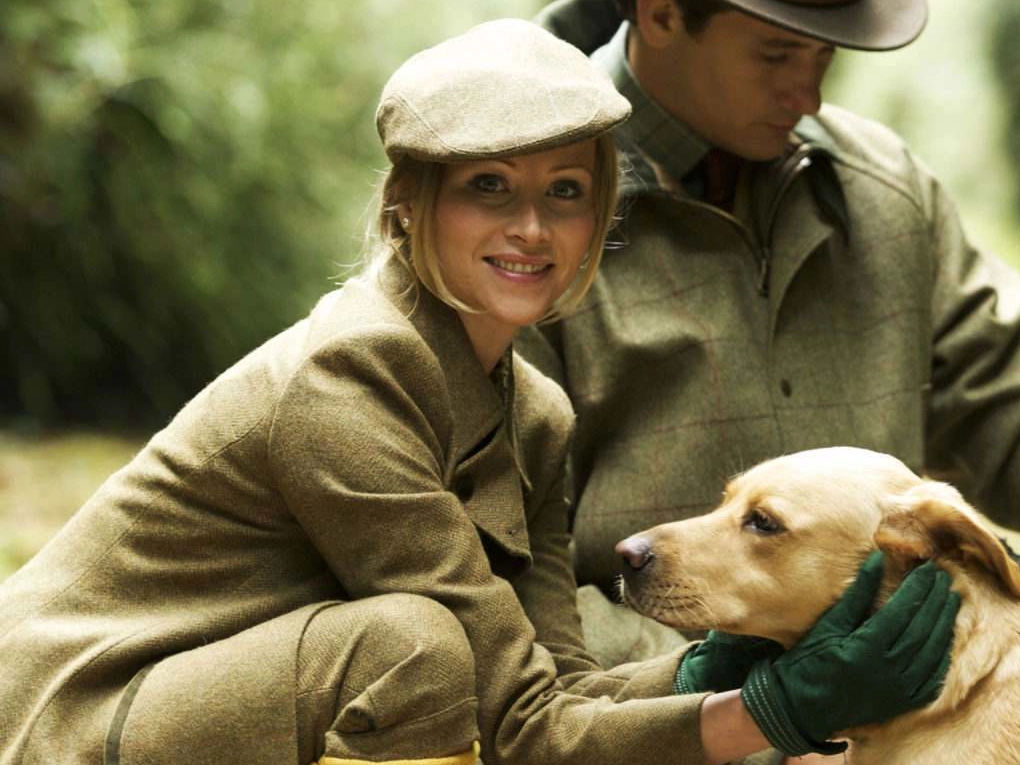Something is stirring in the shires. Amidst the clink of pint glasses in the dwindling village pub, a figure is re-emerging. He treads the country lanes in brightly coloured corduroys, Barbour waxed to a dull sheen. He is the herald of a quiet revolt. The young fogey is back.
They tried to kill off the fogey with incessant lifestyle choices and managerial diktats. he may have been chastised out of public office by globalists, but he was never truly defeated. The neo-fogey has emerged to take up the mantel, understanding that British civilisation depends less on innovation than on stewardship, ritual, and a certain style. After all, he is as much a part of the British Isles as the rook in the churchyard, the drizzle on a county cricket pitch, or the ancient hedgerow he insists on defending against yet another planned bypass and housing development.
A long campaign of refusal
The neo-fogey’s wardrobe is defiantly timeless. He is against the relentless cavalcade of seasonal trends and fast fashion. Like all native creatures, he instinctively knows what works for the British climate and its traditions. His uniform is a wax jacket from Barbour, jumpers from Jamieson’s or Johnstons of Elgin, checked tattersall shirts from Cordings, corduroy or moleskin trousers in pheasant-bright colours, Pantherella or Corgi socks.
The neo-fogey is declaring war with refusal. Refusal of managerial jargon, the zero-sum game of social media, the synthetic consolations of the wellness-industrial complex. His philosophy is a cultivated disdain for novelty. Where others scroll, he strolls. Where others tend their networks, he tends his garden.
In town, amongst a sea of polyester and hoodies, the look is donnish and rooted to the Sceptred Isle. He wears a tweed jacket sufficiently worn in, a striped tie that may once have belonged to a rowing club, heavy cords, and spectacles with tortoiseshell rims. His shoes are Northampton-made, Crockett & Jones, perhaps, Tricker’s, Edward Green, or Cheaney. The neo-fogey walks the city streets like a misplaced curate, carrying a battered leather satchel instead of a characterless laptop bag made of technical fabrics that will take a millennium to decompose. he is looking for old bookshops, pubs that carry their age with pride, old churches, and tea rooms that have survived against the influx of American fast-food slop.
“Never wear brown in town” may have served the City in its pinstriped heyday, but the neo-fogey is never quite city and defiantly modern London. Brown brogues may appear under flannel trousers on a Saturday, but for weddings or dinner with banker friends at the RAC Club, he obeys the old forms: black oxfords, a chalkstripe suit, perhaps even a discreet boutonnière. Dressing appropriately is an expression of respect for the occasion and for others.

In the country, the neo-fogey feels most at home. The Barbour Bedale, waxed and worn. Brogues or boots have a patina developed by decades of rain. The flat cap from Lock & Co. is worn without irony. The colours are those of the land itself: moss, bracken, sloe, pheasant breast. It is camouflage and armour against the homogenising gaze of the age. An umbrella from Fox or Swaine (Adeney Brigg) completes the picture.
Jewellery is permitted only in the most restrained forms. A signet ring might be worn on the little finger. A watch of discreet provenance, such as a Jaeger-LeCoultre Reverso or Cartier Tank, might be worn with a battered tweed jacket. An old Rolex might be worn upside down for field sports. These are not status symbols but markers of continuity, tradition and craftsmanship. A rejection of throwaway culture, they will be passed onto the next generation of fogey.
The neo-fogey does not wear a tie out of compulsion but out of civility. It is a gesture of respect to the host who has laid the table, the restaurateur who has kept standards alive against the odds, or the landlord who maintains a pub where genteel conversation is still possible. A tie signals recognition that one is entering a shared space, that others matter. It may be striped, regimental, or club; always natural silk, wool or cashmere. He knows that a crew-neck sweater may excuse its absence, but he recoils at the modern barbarism of a T-shirt beneath a suit. Informality is acceptable, but vulgarity never.
The neo-fogey dresses for duration, with clothes that can be worn, mended, and worn again. He invests in things that will last longer than he will, and delights in the idea that his 22oz tweed suit will be too heavy for any landfill to digest. In an era of fast fashion, this is his long campaign of refusal.
National dress for the English
The waxed jacket is, in effect, the English national dress. The Barbour Bedale or Beaufort is worn by the English as naturally as a Madrileño wears a sweater over the shoulders. Handed down through families, patched, rewaxed, and repaired, it is as much a part of the national identity as Rule Britannia.
Fogey attitude
The neo-fogey’s attitude is not affectation but preservation. In an age of algorithmic frenzy, he stands for order: the dry stone wall that has outlasted empires, the Georgian sash window and heavy oak door uncorrupted by hideous UPVC, and the modern addiction to convenience. His taste is not whim but fidelity — to Purcell over drill, to the country lane over the dual carriageway, to the cosy wood-lined pub snug and half of ale over the soulless café chain.
This is a deliberate choice to inhabit forms tested by centuries. He raises money to repair the parish church roof, even if he no longer believes, because the building has beauty and is the soul of the village. He rings bells on Sunday morning, supports the local rugby and cricket teams, keeps the High Street bookshop alive by buying Waugh in hardback.
In the chaos of managerial modernity, the neo-fogey embraces slowness and acts of continuity against the destructive, chaotic forces of the modern world. One might think of Evola’s “riding the tiger”. The neo-fogey uses the very chaos and isolation of modernity to strengthen his inner, spiritual sovereignty, to become the “Absolute Individual” who is untouched by the decay around him. The new-fogey achieves a spiritual aristocracy of the self, while navigating the modern world with detached mastery, keeping faith with what should be cherished, even when the pervading culture conspires to deride it.
Corduroy, claret, and Kierkegaard
The neo-fogey’s instincts chime with the great critics of modernity. When he writes letters in J Herbin’s Bleu Myosotis ink rather than dashing emails off in haste, one is reminded of on Walter Benjamin’s notion of aura: the singular presence of an object in time and place which cannot be replicated. His loyalty to the parish church, the old pub, the familiar cricket pitch echoes Roger Scruton’s defence of oikophilia: love of home, of rooted places, against the abstractions of placeless modernity and meaningless universalism.
Most of all, the neo-fogey embodies Kierkegaard’s idea of repetition. He understands that meaning isn’t found a single time, but made again each day. So he trims the hedge after nesting season, each snip a quiet victory over the chaos he let creep in through the spring. He rereads Patrick O’Brian, and the same words that once offered escape now chart a course through his own dilemmas. He polishes the same brogues, the worn leather a testament not to the miles behind him, but for a future they have yet to walk.

The Cultural diet
The neo-fogey is sure of his tastes and what resonates with the timbre of his own temperament. His books, his music, his films are not passing enthusiasms but chosen companions.
Milton and Shakespeare supply his moral compass. Anthony Powell and Evelyn Waugh teach him the tragi-comedy of human folly. Flaubert teaches him to see the world with clear, unsentimental eyes. The King James Bible sits on the bedside table as a reminder that the English language once had the dignity of stained glass silence. Poetry he takes from Housman, Betjeman, or Larkin, the masters of English melancholy. But he also reaches further back, to George Herbert and the English metaphysical poets, who remind him that wit and devotion can coexist.
Yet the neo-fogey’s tastes are not confined to the page. He delights in cinema where wit and charm have not been extinguished: British films made prior to 1970, Merchant Ivory, the poised comedies of Whit Stillman, the Technicolor pageantry of Powell and Pressburger. He has a soft spot, too, for Patricia Highsmith’s Ripley and classic film noir.
Choral evensong, Purcell’s plangent grounds, Handel’s grandeur, Vaughan Williams’ rolling fields, Britten’s unsettling scores form the neo-fogey’s soundscape. Folk music has its place too. You’ll see him at the Cambridge and Sidmouth folk festivals. On May mornings he will applaud the Morris dancers on the village green. Such rituals are continuities that bind place and people.
Even his sly fondness for Britpop belongs here. Blur and Pulp were, in his eyes, the last analogue hurrah before the algorithm seized the turntable. They remind him that even pop once carried irony, wit, and a sense of locality.
For the neo-fogey art is not about spectacle and shock value. He turns to the Renaissance and the Dutch Golden Age for order and light. In the twentieth century he admires the precision and glamour of Lempicka, proof that modernity need not abandon line or elegance. He looks with weary disdain on the auction-house circus and the conceptual stunt, sympathetic to the Stuckists in their unfashionable insistence that painting should involve paint. More often, though, he takes delight in the local and the enduring, the quiet beauty of a medieval rood screen in a parish church, a modest watercolour of the English landscape.

Politics of preservation
The neo-fogey’s politics are not found in manifestos but in acts of conservation. He lays a hedge, not because it wins votes, but because it holds the land together. He fights to save the village pub because it is the last agora. He campaigns against the intrusion of new roads and housing developments, those blunt instruments that threaten the delicate balance between land and belonging, shaped slowly over centuries.
He has no patience for the so-called conservatives and their creed of profit, whose only instinct is to conserve their own wealth, while the countryside is carved up by developers and communities are left to rot. They speak of tradition, yet stand idle as the bulldozers roll in. Against their sterile utilitarianism, he wages a quiet war of preservation.
His allegiance lies not with markets, but with places. Where the state has eroded institutions and corporations have hollowed out the high street, he responds with guerrilla gardening, community orchards, and the defence of the village green against the encroaching sprawl. His creed is tradition and ecology, indivisible.
William Morris railed against ugliness and industrial spoliation; Ruskin argued for beauty and craftsmanship as civic duties; Orwell in England Your England saw national character expressed not in parliament but in the pub, the church, the back garden, the peculiar rituals of the ordinary. The neo-fogey continues this line, intuitively recognising that what is worth conserving is not spreadsheets or GDP but the conditions of civilised life.

Here he embodies David Goodhart’s distinction between the Somewheres and the Anywheres. The Anywhere drifts through airports and Zoom calls, placeless, frictionless, anonymous, dead to their own history. The neo-fogey is a Somewhere, bound to the cattle market, the second-hand bookshop, the parish fête, the riverbank, and cathedral close. He is as much at home at the allotment or railway platform as in the pew or the pub, anywhere that resists erasure. He orders steak-and-kidney pudding and a pint of best bitter at the pub because it’s what they have always done best, but also in the hope that the landlord doesn’t panic into replacing the menu with trendy, here-today-gone-tomorrow Anywhere food.
The neo-fogey may agree with Burke on society being a partnership between the living, the dead, and the unborn, but he acts more than he argues. He understands that without the familiar landscapes (urban and rural), customs, and rituals that a nation has built over centuries, it risks becoming a meaningless, deracinated commercial zone. And in his quiet way, he fights to defend a Britain that still resists it. In an age that dreams of frictionless markets, algorithmic governance, Landian transhuman fantasies, the neo-fogey stands with a STOP sign.
The Neo-Fogey Directory
A few points of reference for those wishing to cultivate fogeydom.
Makers & Outfitters
- Barbour (South Shields): wax jacket as fogey second skin. Must smell faintly of wet dog.
- Cordings (Piccadilly): shirts in broad checks and cords in colours visible from low-flying aircraft.
- Crockett & Jones, Tricker’s et al (Northampton): brogues that outlive their owners.
- Jamieson’s of Shetland, Johnstons of Elgin, Guernsey Woollens: tradtional sweaters with no added plastic.
- Lock & Co. Hatters (St James’s): a hat signals true rebellion against the loungewear hordes.
Places of Pilgrimage
- Bath: avoiding the modern ugliness they keep adding to the fringes, Bath is a fogey spa town of Georgian elegance.
- Venice: for reliving Brideshead in gondolas, before they sink under cruise ships.
- Prague and Vienna: where fogeys inhabit Habsburg-era coffee shops and read newspapers the width of bedsheets.
- Edinburgh: fogey-friendly granite Calvinism and whisky.
- Nantucket: New England’s fogey outpost, with weathered shingles and Nantucket reds (which are, of course, pink).
Pubs & Institutions
- The CAMRA National Inventory: gazetteer of pubs mercifully untouched by bland interiors and the gastrofication plague.
- Second-hand bookshops: in cathedral closes and cobbled side streets hunting down crumbling copies of the classics.
- Village cricket grounds: the pavilion must be no larger than a shed, the sandwiches curling at the edges.
- Parish churches: the quiet serenity of prayer cushions and rood screens.
Rituals
- Hedge-laying competitions, Morris dancing at dawn, and evensong in a draughty cathedral.
- The county show: shire horses, Victoria sponges, and more Union Jacks than you thought still existed.
- Reclining in a leather armchair at a gentleman’s club, with an aged single malt for company.
- Wilting gently in exotic colonial bars that somehow forgot to close in the 1930s.
Food & Drink
- Ale: hand-pulled, never kegged, ideally served by a landlord who never quite approves of you.
- Stilton: a cheese that reeks of its own aristocracy.
- Steak-and-kidney pudding: proof that civilisation is built on pies and puddings.
- Claret: must be from a case bought decades ago.
- Marmalade: thick-cut, bitter, and preferably homemade.
Grooming
- Hair: cut by a village barber who know everything that’s happening in the vicinity. Side parting encouraged, kept in place with hair oil from Geo. F. Trumper.
- Shaving: with a safety razor and badger brush. Electric shavers belong to salesmen in airport hotels.
- Scent: discreet colognes only: Floris No. 89, Penhaligon’s Blenheim Bouquet. Nothing that comes out of an aerosol or is described as “sport”.
Dogs
- West Highland Terrier: plucky, portable, slightly comic, with an instinct for pub hearths.
- English Setter: elegant, melancholy, aristocratic and born for misty fields and Georgian drawing rooms.
- Labrador: silly old, cuddly labradors.






